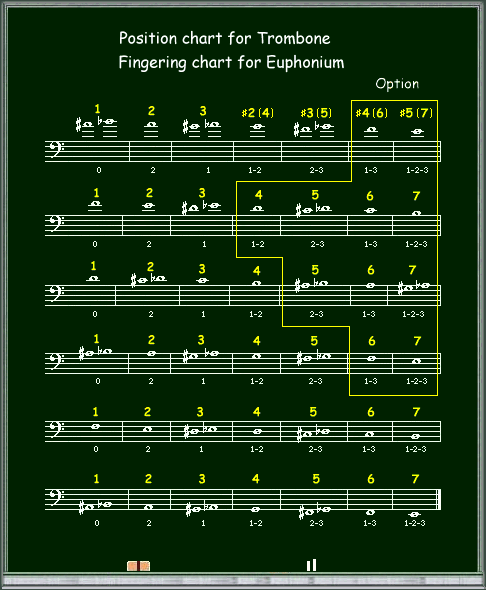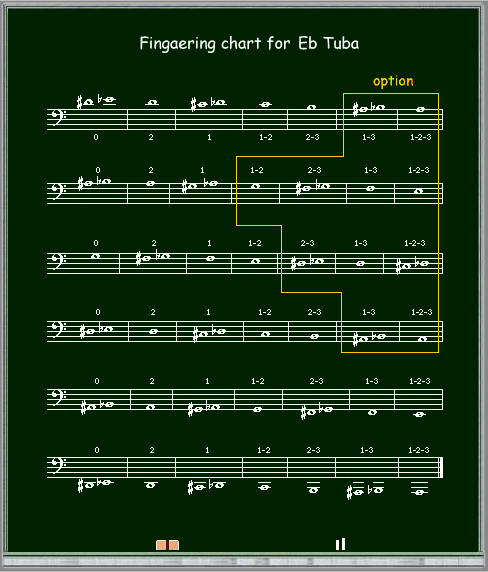The actual sounds produced by the trumpet, cornet, Eb cornet, and alto horn are different, but the relationship between the music score and the Fingering is the same.
In European Brass Band Transposition, the baritone, euphonium, E¢õ and B¢õ tuba also have the same fingering, and the trombone is in 1, 2, 3...7 positions from the left of each row.
As you can see by comparing the first, second, and third bars of each section, fingering for brass instruments is just a combination of tubes that are half a tone lower, connecting overtones. Therefore, if students memorize the fingering order 0⇒2⇒1⇒12(3)⇒23⇒13⇒123, it is the same for trumpets to tubas, and students can practice lip slurs and chromatic scales.
Fingering chart for the basic range of brass instruments written in treble clef.

There are F and B¢õ single horns, but both are treated as transposing F instruments.
There are some schools that only have B¢õ single horns, a teacter teaches fingering as same as trumpets, and transpose a music written in F to Bb, but this can be a problem when a student starts using a double horn in the future, so please teach the fingering as if B¢õ single horn is an F horn from the beginning.
This is a chart of the B¢õ horn's overtones written in F. The B¢õ horn has the same length as a trombone or euphonium, so the overtones are also the same.
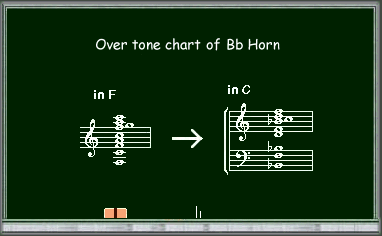
I have written the fingering chart starting from the B¢õ overtone on the left end of each row, lowering it by a semitone to the right.
The second row of overtones is not often used due to pitch issues.
The B¢õ single horn has another rotary that is pressed with the thumb.
This is a rotary called a gestop (stop) that is used to adjust the pitch when you put your right hand deep into the bell to change the tone, and is not used for anything else (usually this tuning slide has two levels and can be used as an alternative fingering for pitch correction).
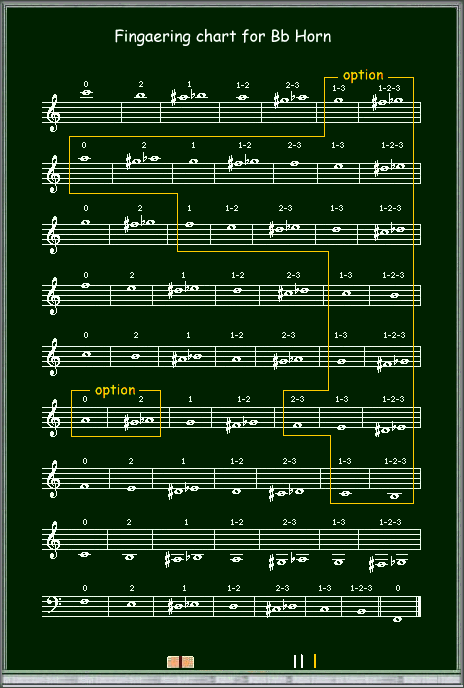
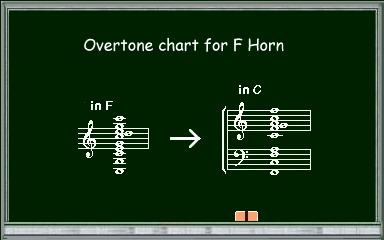
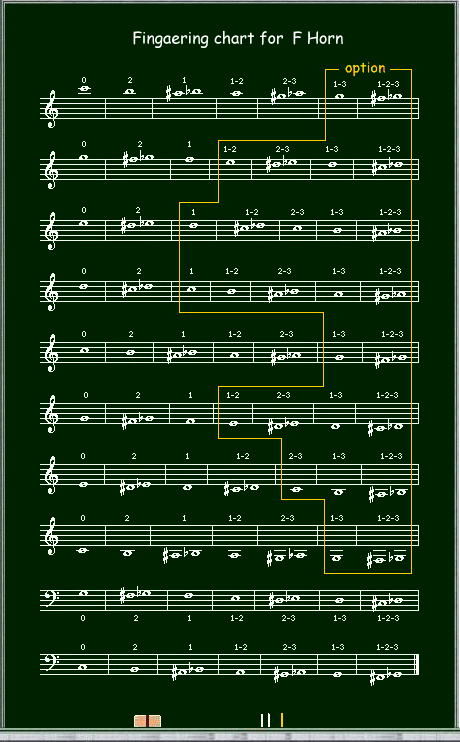
Double horn is an instrument that combines F and B¢õ single horns.
For a simple explanation of double horn and fingering, see here.
Below is a table of fingering and positions for the basic range of euphonium and trombone.
For an explanation of the 4th piston (rotary) for euphonium and tuba, see here.
The trombone positions marked with # are 2-3 cm shorter (higher) than their original positions. Please listen carefully and remember them. Using a slightly shorter(closer)position is more reliable for pronunciation (harder to pronounce "purun"), so it is normal to use the # positions for G and F# on a trombone.
